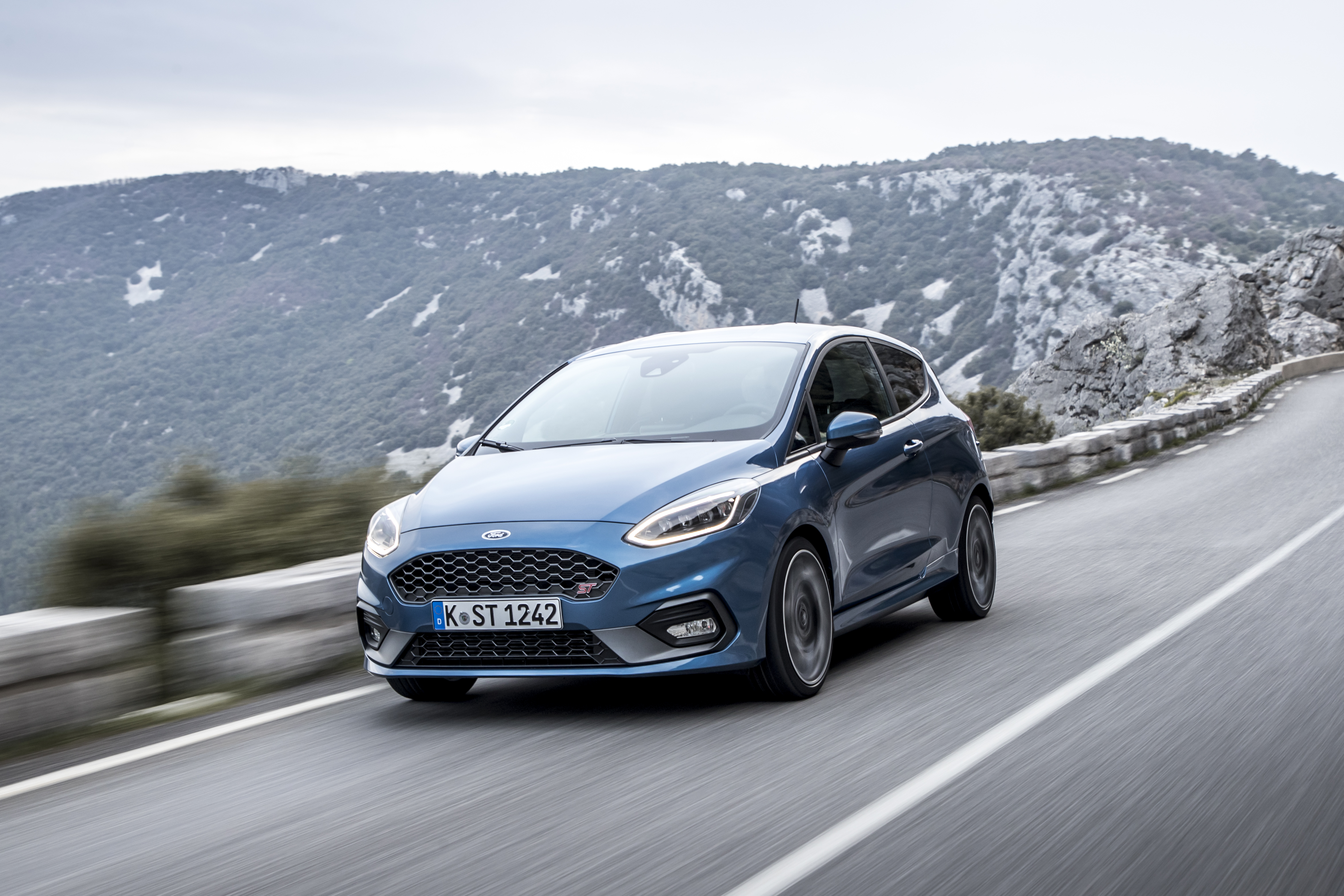What is it?
Here it is – the all-new Ford Fiesta ST. Following on from a model which set the hot-hatch segment alight, this latest version is designed to be more grown up but just as exciting to drive as that iconic original. Based on the updated Fiesta, the ST needs to do a lot to live up to the reputation set by its forebear, while fending off competition from some serious rivals. We hit Nice’s country roads to find out if it this latest ST can regain its place at the top of the hot-hatch pecking order.
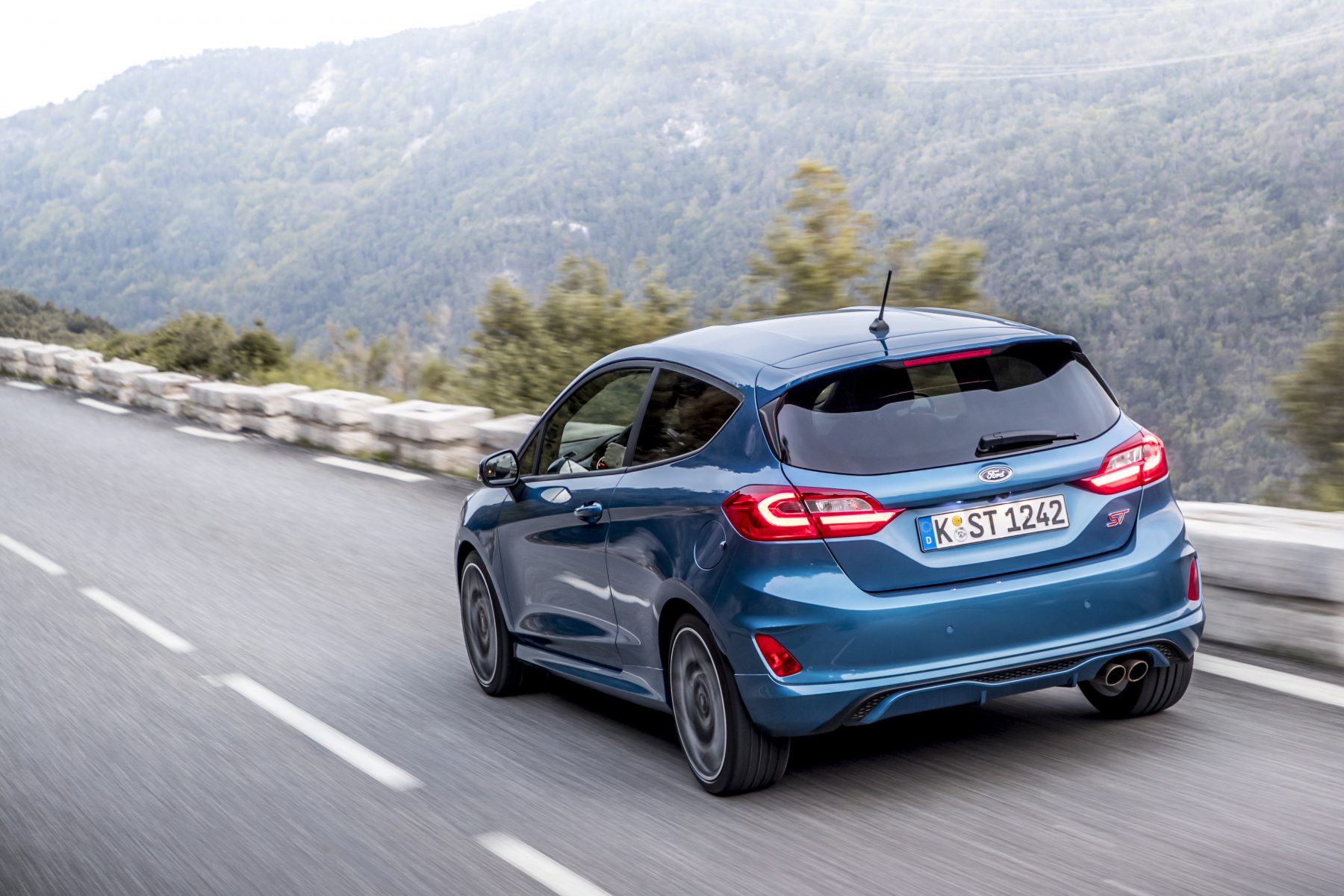
What’s new?
There’s a lot going on here to make this latest Fiesta ST as competitive as possible, yet easy to live with on a daily basis. From the outside, you’d do well to distinguish this performance model from the more mundane yet sportily-styled X-Line version. The main things to look out for are the redesigned bumpers and larger alloy wheels.
In short, it manages just what the old car did – to appear special enough, but not go overboard into the big wings and flared arches territory. Some may think that’s a shame; we think it’s well judged and makes the ST more appealing to a wider audience.
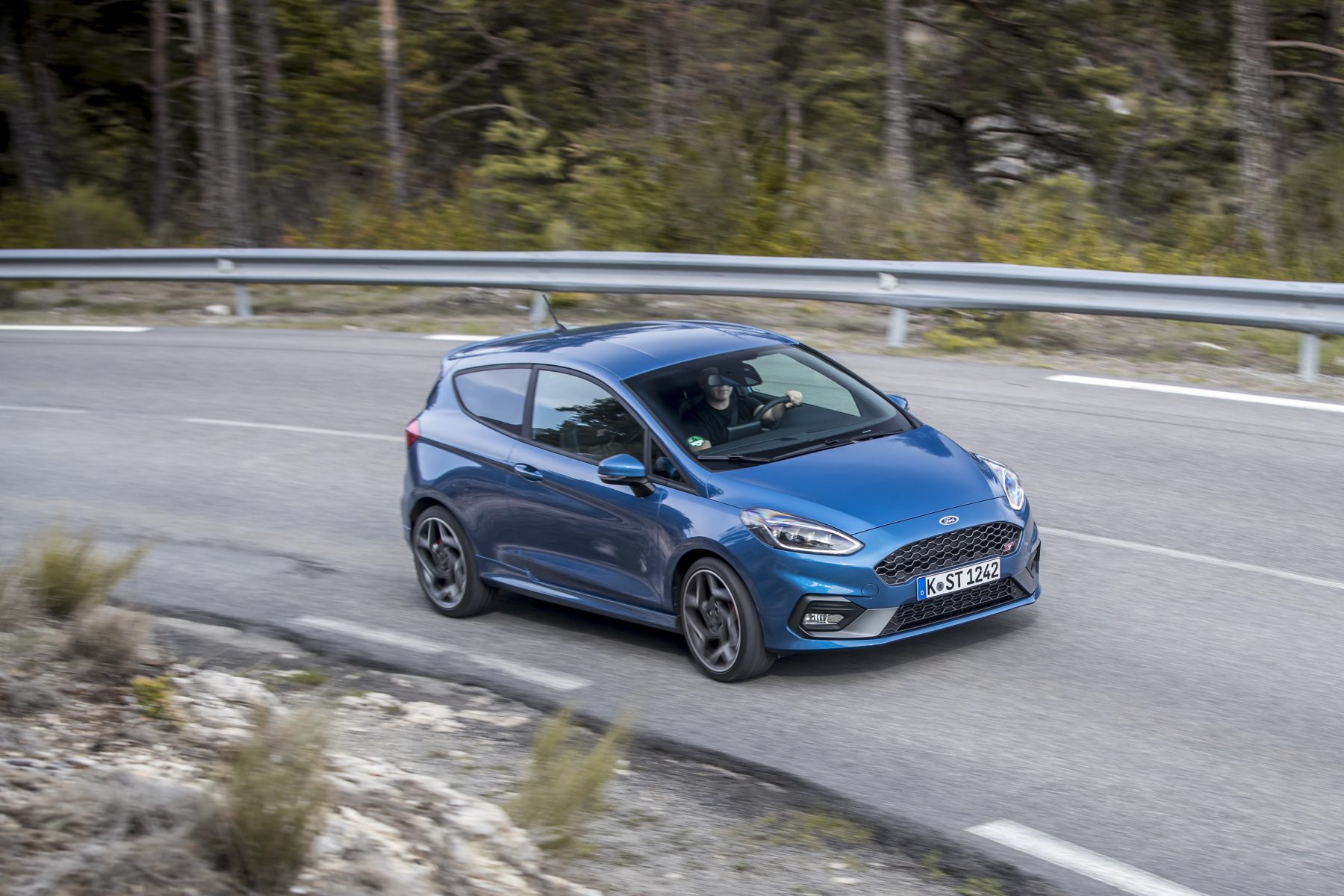
What’s under the bonnet?
The new Fiesta ST has dropped a cylinder compared to the older car, with a 1.5-litre three-banger now under the bonnet rather than a 1.6-litre four-cylinder. Economy is the name of the game, after all, and a smaller capacity engine is designed to deliver better efficiency. However, performance seekers need not despair, for the new ST still packs a pretty decent punch. The compact engine produces 197bhp and a healthy 290Nm of torque, allowing for a 0-60mph sprint time of 6.2 seconds. Power is sent to the front wheels via a six-speed manual gearbox – there’s no automatic, paddle-controlled version here.
Despite this, Ford claims that the ST will return up to 55mpg on the combined cycle, and emit just 114g/km CO2 – not bad at all for a car with this level of performance.
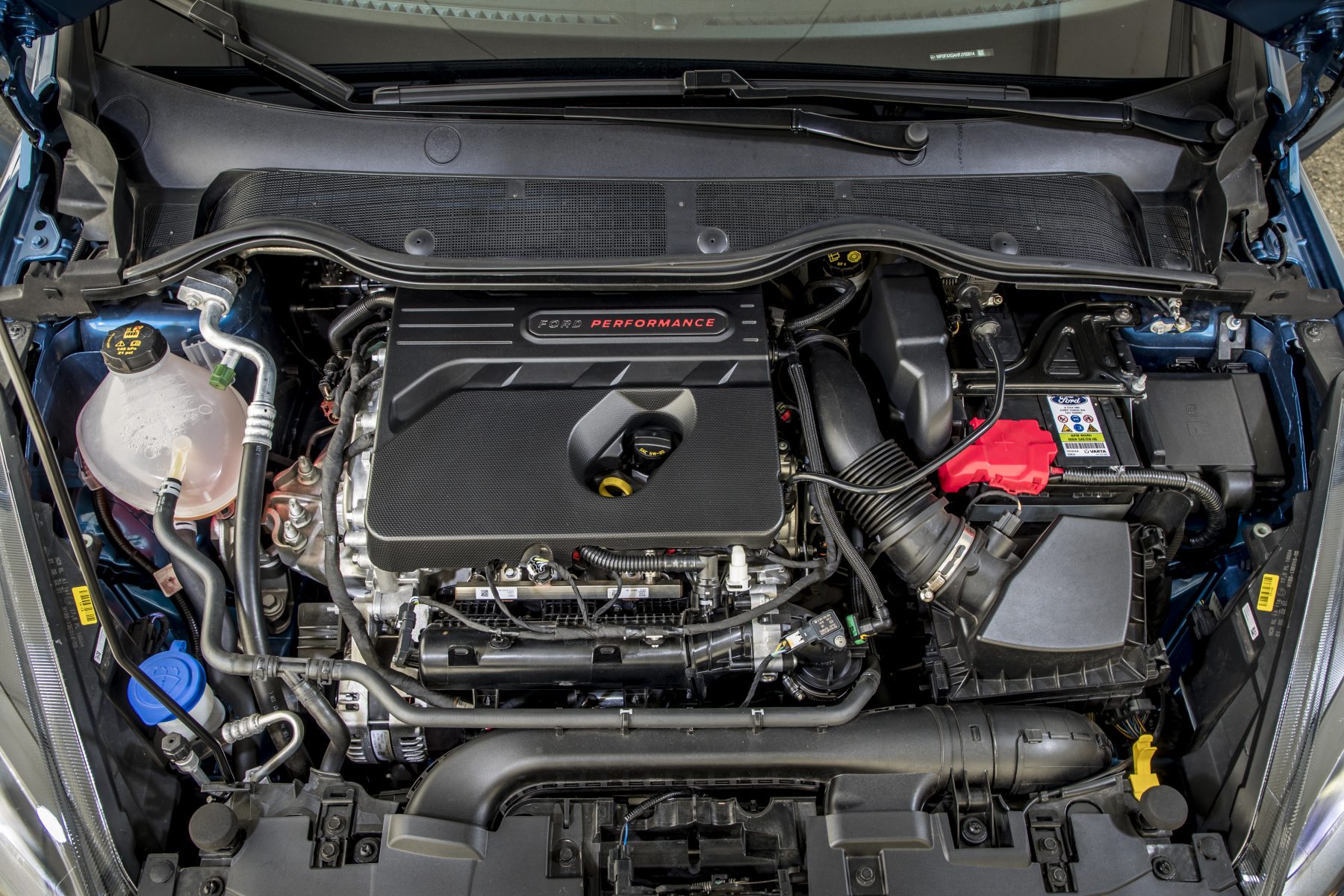
What’s it like to drive?
The new ST had the tricky task of living up to the reputation set by its predecessor but it has more than achieved this goal.
Though the new ST has lost a cylinder over the older car, you really don’t feel like you’re lacking in engine excitement. It revs with a keenness you don’t expect from a unit this small, and feels properly engaging at all times. The engineered exhaust pops do feel a little like overkill on occasions, but they certainly add to the drama.
The three separate driving modes do genuinely change the attitude of the car, with the steering weighting up considerably as you progress through the different settings. It takes a little getting used to, but it’s well-judged and feels more than matched to the car’s performance.
Exciting day today. Whole lot of expectation pic.twitter.com/nf17hDpmCM
— Jack Evans (@jackrober) May 10, 2018
How does it look?
The Fiesta ST is rather similar in appearance to its more conventional stablemates. Yes, there are some sportier touches to be found here and there, but overall it looks quite close to any current-generation Fiesta. However, that’s no bad thing – the regular car is sharply styled and looks fresh, so the ST is just a follow-on from this – albeit in a slightly sportier direction.
The dual-pipe exhaust at the rear does signal somewhat towards the car’s intent, while small ST badges placed in the front grille and on the boot do help to distinguish the car from the rest of the range. It’s certainly not an outrageously-styled car, but it’s just special enough to appeal to most people.

What’s it like inside?
The interior of the new ST features just enough sporty touches too, without overcooking it and making it over the top. The Recaro bucket seats are hugely supportive and have a decent level of adjustment to them. The flat-bottomed, multifunction steering wheel is just chunky enough, too.
The majority of plastics are of a good quality, and the main dashboard section looks leagues ahead of the car it replaces – this is largely down to the reduction in buttons. We might like there to be a little more emphasis put on the driving modes button (it’s mounted quite lower down and doesn’t look too different to the rest of the controls), but this really is just a minor niggle.

What’s the spec like?
Our test car came in top-spec ST-3 trim line, and this gets all the bells and whistles that you could possibly want. In this trim, you get 18-inch alloy wheels as standard, along with leather-trimmed Recaro sports seats that are heated in this instance, and you also get the all-important red brake callipers.
It’s crucial to mention that the Performance Pack can be added to ST-2 and ST-3 trim levels for £850. This adds the Quaife limited-slip differential, which is ideal for those after a slightly sharper-turn in, and more out-of-corner traction. It’s a reasonably-priced option which really does add to the capability of the car.
The Fiesta ST is also available in either three- or five-door layouts, giving customers a more practical option should the more compact version not quite fit the bill.
Yeah, it sounds pretty good too #FiestaST pic.twitter.com/AGGAdXW35g
— Jack Evans (@jackrober) May 10, 2018
Verdict
The new Fiesta ST has more than lived up to the expectations people had of it. Though it’s considerably different to the car it replaces, Ford has managed to recapture the spirit of the older model, making it just as exciting and involving to drive as the old ST. We’ll have to wait to test it out on UK soil to see how it gets on with our roads, but for the now the leading impression of this latest hot Fiesta is a wholeheartedly positive one – this is one triumphant comeback.
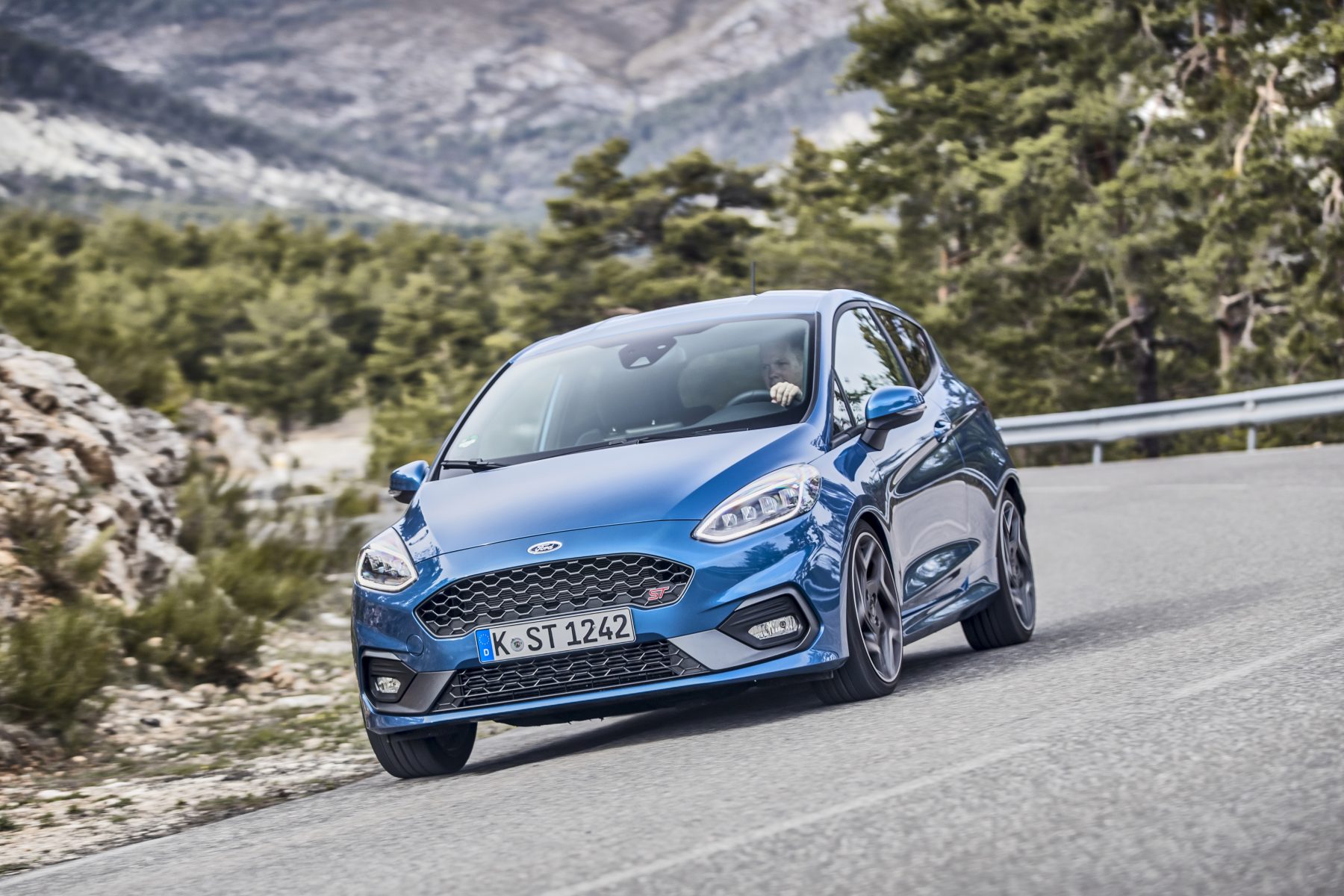
Facts at a glance
Model as tested: Ford Fiesta ST
Price: £18,995
Engine: 1.5-litre turbocharged three-cylinder
Power (bhp): 197
Torque (Nm): 290
Max speed (mph): 144
0-60mph: 6.2 seconds
MPG (combined): 55
Emissions (g/km): 114

